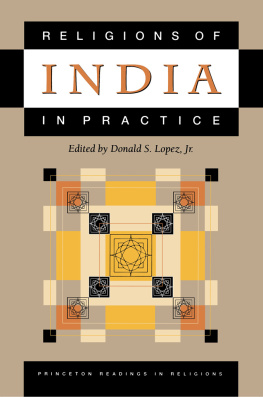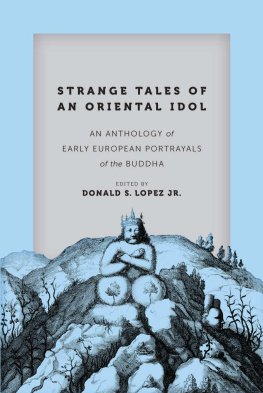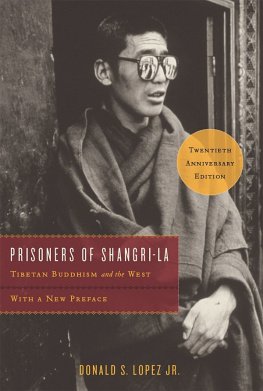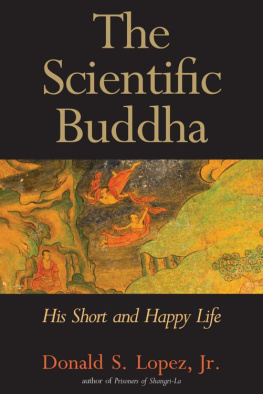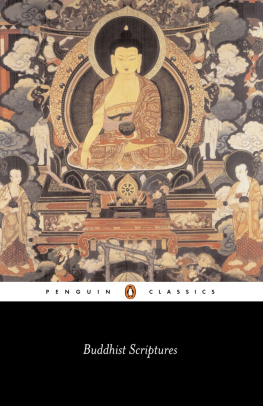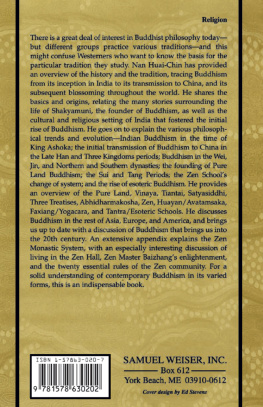
BUDDHISM & SCIENCE
BUDDHISM AND MODERNITY
A series edited by Donald S. Lopez Jr.
RECENT BOOKS IN THE SERIES
Critical Terms for the Study of Buddhism, edited by Donald S. Lopez Jr. (2005)
The Madmans Middle Way: Reflections on Reality of the Tibetan Monk Gendun Chopel, by Donald S. Lopez Jr. (zoo6)
The Holy Land Reborn: Pilgrimage and the Tibetan Reinvention ofBuddhistIndia, by Toni Huber (2008)
BUDDHISM & SCIENCE
A Guide for the Perplexed
DONALD S. LOPEZ JR.

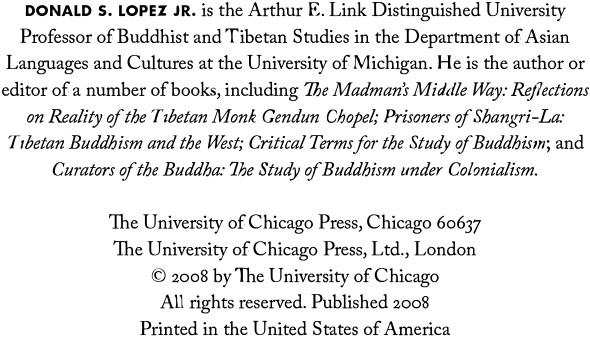



In Memory of My Father
DONALD S. LOPEZ
1923-2008
How easily these old worships ofMoses, of Zoroaster, of Menu, of Socrates, domesticate themselves in the mind. I cannot find any antiquity in them. Zhey are mine as much as theirs. RALPH WALDO EMERSON, 1841
CONTENTS
ix
PREFACE
In the winter of 1870-71, Ernst Johann Eitel (1838-1908), a member of the London Missionary Society, delivered a series of lectures on Buddhism at the Union Church in Hong Kong. Eitel was one of the great missionary-scholars of the Victorian period, an accomplished sinologist who also read Sanskrit. His ultimate goal was to demonstrate the falsity of Buddhism. Yet in his third lecture, he enumerated some of the ways in which Buddhism had anticipated science:
'Though no Buddhist ever attained to the clearer insight and mathematical analysis of a Copernicus, Newton, Laplace or Herschel, it must be acknowledged that Buddhism fore-stalled in several instances the most splendid discoveries of modern astronomy. Teaching the origin of each world to have taken place out of a cloud, the Buddhists anticipated 2,000 years ago Herschel's nebular hypothesis. And when those very patches of cloudy light or diffused nebulosities which Herschel believed to be "diffused matter hastening to a world birth" dissolved themselves before the monster telescope of Lord Rosse into as many assemblages of suns, into thousands of other world-systems dispersed through the wilds of boundless space, modern astronomy was but verifying the more ancient Buddhistic dogma of a plurality of worlds, of the co-existence of thousands of chiliocosmoi inhabited by multitudes of living beings'
Eitel invokes five great names in the history of astronomy: Nicolas Copernicus (1473-1543), whose On the Revolutions of the Celestial Spheres (De revolutionibus orbium coelestium) presented the heliocentric theory of the universe; Sir Isaac Newton (1643-1727), who invented the refracting telescope and explained the role of gravity in planetary motion; PierreSimon Laplace (1749-1827), who developed mathematical methods for calculating and predicting the motion of the planets; William Herschel (1738-1822), discoverer of Uranus and cataloger of nebulae; and William Parsons, third Earl of Rosse (1800-1867), who in 1844 built the "Leviathan of Parsonstown," the world's largest telescope. Each of these figures would have been well known to Eitel's expatriate audience in the Hong Kong church.
Laplace and Herschel were associated with the nebular hypothesis, a theory previously propounded by both Emanuel Swedenborg and Immanuel Kant, which postulated that a solar system originated from a mass of incandescent gas-for Herschel it was a shining fluid that he called "true nebulosity"-rotating on an axis, eventually contracting into a mass. The outer rings of this mass broke off to form planets, with the central core becoming their sun. One of the great debates in astronomy in the nineteenth century was whether this incandescent fluid indeed existed or whether it was instead a mass of distant stars. In early 1846, Rosse and his monster telescope showed that the Orion Nebula could in fact be resolved into stars.
These were some of the latest scientific discoveries of Eitel's day. And he claims that they have been "forestalled" (by which he means "anticipated") two thousand years ago by the Buddhists. Eitel is referring to a Buddhist account of the origin of the world. Faint winds, impelled by the force of karma, begin to blow in the vacuity of space, eventually converging to form a circle of wind, described as solid and indestructible. A thick cloud forms above the circle of wind, raining down drops of water of various sizes that together become a great ocean, supported on the circle of wind. In this ocean, a thousand golden lotus flowers appear.' he churning of the ocean eventually gives rise to a ring of mountains that contains the waters. In the center of the ocean, a great mountain appears, with an island (flanked by two smaller islands) in each of the four cardi nal directions. This is a world, and a thousand of these worlds is a Buddhist universe, what Eitel calls a "thousand world" or chiliocosm.2
Eitel sees in the Buddhist rain cloud an anticipation of Herschel's nebulae, and in the Buddhist "thousand world" an anticipation of galaxies, anticipated without the assistance of Rosse's giant lens. These worlds were inhabited by "multitudes of living beings." Eitel, in keeping with the views of many astronomers of his day, believed that the planets were populated. Indeed, late in life, Herschel had published a paper arguing that the sun was inhabited, with two layers of dense clouds protecting the inhabitants from the intense light of the luminous shell observed from earth; sunspots may be the peaks of tall mountains rising through the shell.'
We see, then, a Christian missionary, almost a century and half ago, making grudging claims for the compatibility of Buddhism and Science. Over the ensuing decades, such claims have continued to be made with a remarkable persistence. This book is a study of that persistence.
Its central claim is a modest one. It is that in order to understand the conjunction of the terms Buddhism and Science, it is necessary to understand something of the history of the conjunction. It might be dated back to the sixteenth century, when Saint Francis Xavier, the Jesuit missionary to Japan, noted that the Buddhists do not understand that the world is round. It might be traced back to the Reverend Dr. Eitel's lectures from his Hong Kong pulpit. Or it might be traced to the year 1873, when the Wesleyan minister David da Silva in Sri Lanka held up a globe during a debate with a Buddhist monk and asked him to locate Mount Meru, the cosmic peak that rose from the waters to form the center of the Buddhist world. That these events occurred in the course of Christian missions to Buddhist Asia suggests that Buddhist claims about Science originated in polemic, with Buddhists arguing that their religion is not superstition but science. Yet such claims have persisted after the opponent in that polemic has disappeared, or has at least become less visible. And the claims of compatibility have not always originated among Asian Buddhists. The discourse of Buddhism and Science has been transmitted through networks that crisscross the nebulous boundaries of East and West. Asian Buddhists have argued for the compatibility in order to validate their Buddhism. European and American enthusiasts and devotees have argued for the compatibility in order to exoticize Science, to find it validated in the insights of an ancient Asian sage.
Next page

